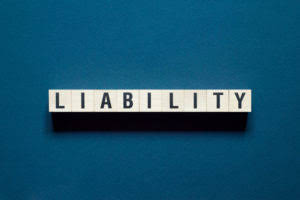
It helps people make informed decisions about investing in or lending money to the company. Plus, it makes understanding the company’s finances a lot easier for everyone. The need for a classified balance sheet is crucial for both internal and external stakeholders, such as investors, creditors, and management. Without this detailed breakdown, it becomes difficult to assess the company’s ability to fulfill short-term obligations or the stability of its long-term assets. Without such a structure, there’s a higher risk of misinterpretation, which could lead to poor financial decisions. It is the format of reporting a company’s or business’s assets and liabilities.

Components of a Classified Balance Sheet
In any case, in a classified balance sheet format, such a computation would be direct as the administration has clearly mentioned its classified balance sheet current assets and liabilities. Each of these components provides valuable information about the company’s financial position, and understanding them is key to interpreting a classified balance sheet effectively. At its core, a classified balance sheet is an enhanced version of a standard balance sheet, with a deeper level of organization and clarity. It groups or ‘classifies’ assets, liabilities, and equity into several subcategories, making it easier for stakeholders to analyze and interpret the data.
Enhanced Financial Analysis

What a business owns is called assets, what it owes is displayed as liabilities, and how much the business is worth equivalents equity. The owner/officer debt section simply includes the loans from the shareholders, partners, or officers of the company. This section gives investors and creditors information about the source of debt and more importantly an insight into the financing of the company. For instance, if Bookkeeping for Painters there is a large shareholder loan on the books, it could mean the company can’t fund its operations with profits and it can’t qualify for a commercial loan. Classified balance sheets are more than just static reports—they are dynamic tools that aid many stakeholders in making vital business decisions. Since 2000, Invensis has been catering to the diverse outsourcing needs of clients for multiple industries and constantly striving to add value to clients’ businesses.
Financial Accounting
The classified balance sheet is more detailed and useful for financial analysis, while the unclassified/standard balance sheet is simpler and might be used for smaller businesses or less detailed reporting. Liabilities are obligations that the company owes to external parties, typically involving the payment of money, goods, or services in the future. Current liabilities incorporate all debts that will CARES Act become due for the current time. Basically, this is the amount of principle needed to be repaid in the following year.
- For example, understanding how much profit a company makes after all expenses are paid helps investors decide if the company is successful.
- There’s no standardized set of subcategories or required amount that must be used.
- Rick is a highly accomplished finance and accounting professional with over a decade of experience.
- By organizing everything into these sections, a classified balance sheet gives a clear picture of the company’s financial health.
- Hence, on the classified balance sheet, dividends would be reflected as a reduction in the stockholder’s equity section, specifically in retained earnings account.

With Taxfyle, your firm can access licensed CPAs and EAs who can prepare and review tax returns for your clients. Taxes are incredibly complex, so we may not have been able to answer your question in the article. Get $30 off a tax consultation with a licensed CPA or EA, and we’ll be sure to provide you with a robust, bespoke answer to whatever tax problems you may have.
- An unclassified balance sheet does not have sub-totals, clearly defined categories, and accompanying notes.
- Despite the fact that balance sheets are made by accountants, they are also used by ordinary investors who probably won’t have an accounting foundation.
- This classification allows for easier analysis of a company’s liquidity, solvency, and overall financial position.
- A classified balance sheet is a financial statement that separates a company’s assets and liabilities into different categories.
- It is a more detailed approach, whereby the business will organize the data in such a manner so that more specific and detailed information is available to whoever tries to analyse or read it.
